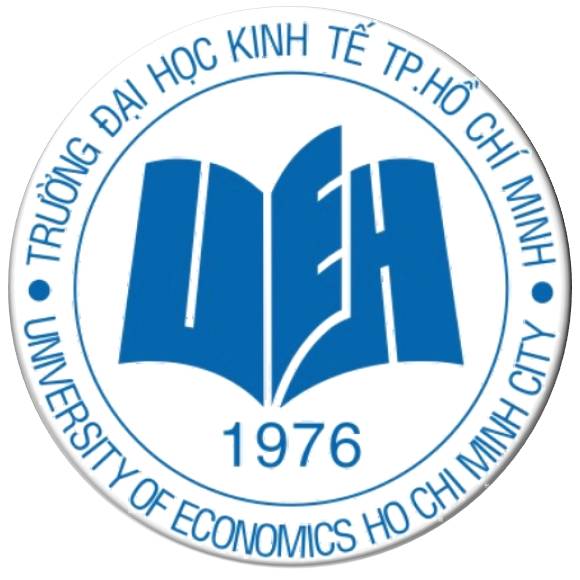
SGPDE Workshop 2020
July 13-14, 2020 - Sài Gòn
| Giới thiệu | Chương trình | Liên hệ |


| 08:45 - 09:00 (Sai Gon) | Khai mạc |
| 09:00 - 09:50 (Sai Gon) | The Anh Bui |
| New Besov and Triebel-Lizorkin spaces and applications | |
| Let $X$ be a space of homogeneous type and $L$ be a nonnegative self-adjoint operator on $L^2(X)$ satisfying Gaussian upper bounds on its heat kernels. In this talk , we will present the development if the theory of Besov spaces $\dot{B}^{\alpha,L},{p,q}(X)$ and Triebel–Lizorkin spaces $\dot{F}^{\alpha,L},{p,q}(X)$ associated to the operator $L$ for the full range $0 < p,q \le \infty$ and $\alpha\in \mathbb R$. Some applications will be discussed. |
| 10:00 - 10:50 (Sai Gon) | Trinh Nguyen |
| The inviscid limit of the Navier-Stokes equations for vortex-wave data | |
| We present our recent result on the inviscid limit of Navier-Stokes on $\mathbb{R}^2$, with initial vorticity to be the sum of point vortices and a smooth, compactly supported part away from the point vortices. In the vanishing viscosity limit, we obtain the 'vortex-wave system', which was introduced by Marchioro and Pulvirenti in the early 90s. This, for the first time, physically justifies the vortex wave system directly from the Navier-Stokes equations. This is a joint work with Toan Nguyen, Penn State University. |
| 11:00 - 11:50 (Sai Gon) | Manh Khang Huynh |
| The Hodge-Neumann heat kernel, intrinsic harmonic analysis, and Onsager’s conjecture in fluid dynamics | |
|
Recently the conservation of energy in the Euler equations (Onsager’s conjecture) was proved on compact Riemannian
manifolds with boundary, with the velocity field in the Besov space $B^{1/3}_{3,1}$, using intrinsic harmonic analysis (IHA) based on the
heat kernel. Now, by manually constructing the heat kernel with the techniques from microlocal analysis, we attain off-diagonal decay for all derivatives, and extend the result to a closed subspace of $B^{1/3}_{3,\infty}$ Some further developments of IHA are also given. |
| 14:00 - 14:50 (Sai Gon) | Quoc Bao Tang |
| Global existence for nonlinear reaction-diffusion systems | |
| The global existence of reaction-diffusion systems is now a classical topic, yet it still poses challenging open questions. This talk reviews recent advances on this topic, addressing systems dissipating mass or entropy. I would like also to draw attention to some interesting open questions. |
| 15:00 - 15:50 (Sai Gon) | Duc Lam Duong |
| Stability estimates for Lagrangian solutions of scalar conservation laws and applications in Bayesian inversion. | |
| Many models in physics can be derived by some sort of hyperbolic conservation laws, such as wave propagation, gas dynamics or traffic flow. The presence of shockwaves requires some special techniques to deal with the well-posedness of these problems. In this talk, we investigate the scalar conservation law and introduce a Lagrangian representation for the entropy solution. The existence and uniqueness of Lagrangian solutions are guaranteed by Filippov theory of differential equations. We prove that such a Lagrangian solution is compatible with the front tracking and vanishing viscosity approximations in the sense that the approximate Lagrangian solution given by either of these methods converges uniformly to the Lagrangian solution corresponding to the entropy solution of scalar conservation laws. For certain flux functions, illustrated by traffic flow, we are able to obtain the convergence rates for the approximate Lagrangian solution with respect to changes in the initial field or flux function by combining the front tracking method with Filippov theory. If time permits, we present an application of this approach in some Bayesian inverse problems of recovering the initial field or flux function by tracking a particle trajectory. |
| 16:00 - 16:50 (Sai Gon) | Phuoc Tai Nguyen |
| Boundary value problem for semilinear elliptic equations with singular potential | |
|
Let $\Omega \subset \R^N$ ($N \geq 3$) be a $C^2$ bounded domain and $F \subset \partial \Omega$ be a $C^2$ submanifold of dimension
$0 \leq k \leq N-2$. Put $\delta_F(x)=\dist(x,F)$, $V=\delta_F^{-2}$ in $\Omega$ and $L_{\gamma V}=\Delta + \gamma V$. Denote by
$C_H(V)$ the Hardy constant relative to $V$ in $\Omega$. We study positive solutions of equations (LE) $-L_{\gamma V} u = 0$ and (NE) $-L_{\gamma V} u+ f(u) = 0$ in $\Omega$ when $\gamma < C_H(V)$ and $f \in C(\R)$ is an odd, monotone increasing function. We establish the existence of a normalized boundary trace for positive solutions of (LE) and employ it to investigate the behavior of subsolutions and super solutions of (LE) at the boundary. Using these results we study boundary value problems for (NE) and derive a-priori estimates. Finally we discuss subcriticality of (NE) at boundary points of $\Omega$ and establish existence and stability results when the data is concentrated on the set of subcritical points. |
| 09:00 - 09:50 (Sai Gon) | Van Hoang Nguyen |
| The sharp Hardy-Moser-Trudinger inequality in arbitrary dimension | |
| Wang and Ye (2012) prove the following Hardy-Moser-Trudinger inequality in the unit disc The preceding inequality which improves both the classical Moser-Trudinger inequality and the classical Hardy inequality in the unit disc. The proof of Wang and Ye is based on the blow- up analysis method which seems not work in the higher dimensions. In this talk, we propose a new approach based on the method of transplantation of Green’s functions to reprove the inequality of Wang and Ye and generalize it both to the higher dimensional unit ball and to the singular weighted cases as well. As a consequence, we obtain a singular Moser- Trudinger inequality in the hyperbolic spaces which confirms affirmatively a conjecture by Mancini, Sandeep and Tintarev. |
| 10:00 - 10:50 (Sai Gon) | Ngoc Tuan Pham |
| Existence, uniqueness, and explosion of solutions of PDE – A probability approach. | |
| Probabilistic methods have been used to study diffusion equations since the 1940s by Kato, Feynmann, Kac, Kolmogorov and other mathematicians. In 1975, McKean modeled the KPP equation (which is a differential equation of the form u_t – u_xx = u^2 - u) by a stochastic branching process. His approach is general enough to apply to a larger class of nonlinear parabolic equations. In 1997, Le Jan and Sznitmann adapted McKean’s method to the Navier-Stokes equations, opening an interesting approach, probabilistic in nature, to study the well-posedness of these equations. In this talk, I will go over some main ideas in McKean’s and Le Jan – Sznitmann’s approach and their applications to some simple/familiar differential equations. |
| 11:00 - 11:50 (Sai Gon) | Nguyen Anh Dao |
| Morrey boundedness and compactness characterizations of integral communtators with singular kernel on strictly pseudoconvex domains in $C^n$ | |
| We study the Morrey boundedness and compactness characterization of integral commutators with singular kernel of Calderón-Zygmund type on pseudo convex domains in$ C^n$. Our results extend some of the ones of Krantz-Li 2001, 2002. |
| 14:00 - 14:50 (Sai Gon) | Phuoc Truong Huynh |
| Semilinear fractional elliptic equations | |
| The paper studies Dirichlet problems for semilinear elliptic equations driven by the spectral fractional Laplacian. In particular, we are interested in the semilinear problems involving measure data with absorption terms \begin{equation} \mathcal{A}_su+g(u)=\mu ~~\text{in}~~\Omega, ~~u=0~~\text{on }~\partial\Omega \end{equation} where $(1/2,1)$, $\Omega\subset\mathbb{R}^N$ is a bounded smooth domain and $\mu\in M(\Omega,\delta^\gamma)$, $\gamma\in [0,1]$. To do this, we first develop a theory for the corresponding linear equations with homogeneous boundary conditions. Based on the linear theory, we show that, under a certain subcritical integrability condition on the nonlinear term g, there exists a unique solution of the Dirichlet problem for every $\mu\in M(\Omega,\delta^\gamma)$. In the case $\mu$ is a Dirac mass, we characterize the asymptotic behavior of solutions near the singular point. This is a joint work with Phuoc Tai Nguyen |
| 15:00 - 15:50 (Sai Gon) | Dinh Thi Nguyen |
| Blow-up of neutron and boson stars | |
| It is a fundamental fact that neutron stars collapse when their masses are bigger than the Chandrasekhar limit mass. We will study the detail of the collapse phenomenon in the Hartree-Fock-Bogoliubov theory. We prove that in the mass critical limit the ground states develop a universal blow-up profile which solves the Lane-Emden equation. Similar result holds for boson stars, in which the blow-up profile is given by the optimizer of a Gagliardo-Nirenberg-type interpolation inequality. |